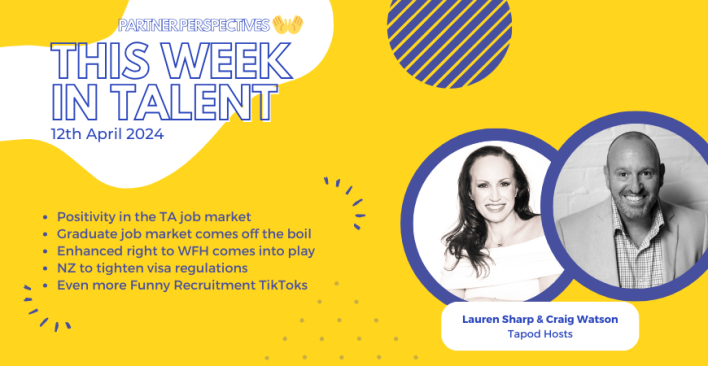What does an Advanced Talent Acquisition Function Look Like?

I get asked this question a lot. Historically I have provided my Talent Acquisition (TA) Executive friends a summation of what I have found as the common themes based of the hundreds of conversations I have had with other TA and HR Leaders.
I thought it was time to share public POV.
An interesting note, while I know a handful of companies that are on this total journey themselves, I have yet to find a TA function that has, or is, doing all of these. In my career, I have had these on my strategic radar in one-way shape or form, but never managed to execute all of them at once. Don’t worry as you read this list if you’re only doing one of them well. That’s the whole point of what we do for a living trying to reach an optimal state, but with an eyes wide open attitude of you will never reach it, but you can continuously improve.
Like anything in life, committing these to your strategy, executing against them to achieve the final outcome is where the rubber hits the road. Additionally, some of these can not be created by TA alone and require a commitment to the strategy from the whole HR function with executive business buy in and support.
This list is not a prioritised, stack ranked organised list, but a collection of common themes with my POV thrown in for good measure, given my background leading global TA functions.
 Have global WFP (Workforce Planning) in place
Have global WFP (Workforce Planning) in place
The TA functions primary responsibility is to identify, attract and assess talent. Knowing who to identify, when and where to attract is critical. The advanced organisation know the answers to these question with a good advanced year line of sight. Most TA functions I advise, start off with only a one-month view to hiring demand at best.
 TA owns Total Talent Acquisition (traditional FTE + Contingent hiring)
TA owns Total Talent Acquisition (traditional FTE + Contingent hiring)
Most companies I see, the hiring of traditional FTE workers is the domain and responsibility of the TA function. Procurement and the business have separate ownership for the hiring of contingent workers.
But, ask any smart CEO, they want answers to the acquisition of all talent. They want line of sight to the total costs of hiring of all talent, be it spend under management, M&A’s, through to the cost associated with traditional FTE hiring. Like WFP, they want more strategic acquisition decisions being made vs hiring managers defaulting to they need a FTE. They want better line of sight to their business managers knowing when it is most optimal to hiring a contractor vs a temp vs a traditional FTE. They want a function inside their organisations who has a holistic view on total talent acquisition.
My final observation on this one. I see more European corporations embracing the total talent acquisition vision, than I see here in the USA today.
 Employee Referral programs that generate 40 percent+ of their hires through the programme
Employee Referral programs that generate 40 percent+ of their hires through the programme
Employee referral articles have been done to death. I will leave you with this piece on what I see as the common themes of what advanced TA functions do to achieve these types of numbers. The secret to a world class employee referral programme.
 Built or leverage a proactive sourcing function as an investment to identify and attract the mission critical (or key roles) ahead of the actual demand
Built or leverage a proactive sourcing function as an investment to identify and attract the mission critical (or key roles) ahead of the actual demand
If you have been in TA/HR all of a few weeks, you quickly come to the conclusion that it’s near impossible to get all your hires through channels where the candidates come to you.
Advanced TA functions have a sourcing strategy that proactively helps them identify that percentage of talent that requires you have to identify and attract. Some companies build the function internally while I have seen many others rely on agencies and RPO’s to help with this strategy.
What I have noticed, and my own POV on this, is most companies leverage RPO’s for high volume/low complexity roles where they will leverage agencies and/or their internal sourcing team for low volume/high complexity/mission critical roles.
Yes, you can mix and match these combos, but I have found advanced TA functions have worked out that having hundreds of recruiters/sourcers focused on inbox (they come to you) activities vs point the team at outbound higher value activities, is the smarter play from a cost and scalability perspective. If you’re interested in my further take on this one point, you can read my previous article: RPO’. I wish I knew then, what I know now.
 Leverage automation (Now AI) on the high volume/low value recruiting tasks
Leverage automation (Now AI) on the high volume/low value recruiting tasks
I don’t think I need to harp on this one too much. Any smart TA leader knows that to have their function adding the greatest value back to the business, you need your recruiters/sourcers focused on higher value activities.
Unfortunately, in recruiting the lower value activities and tasks take time away from the high value work: Updating an ATS/CRM. Looking through hundreds of resumes to get to the right ones. Scheduling candidate interviews with the business. Answering basic company questions that candidates have (Culture, Health/Benefits, interview format/schedule, or general FAQ’s).
I have a client right now that is automating the lower value tasks mentioned above. Top of the funnel pre-screening; Interview Scheduling; Candidate engagement on all company related FAQ’s. Smart TA leaders have been automating the heck out of recruiter’s tasks for years.
Now the next generation of HRTech is allowing them to leverage AI, Chat-bots, Candidate Matching solutions and the like.
 Very high Candidate Experience ratings
Very high Candidate Experience ratings
Be it through the CandE Awards or Glassdoor interview scores, what you will find is advanced TA functions a) Understand the importance of an optimal candidate experience to the overall optimal attraction and hiring of talent and b) Are not just talking about the importance, their actually getting shit done.
This is another one I should not need to harp on as you can find millions of articles and white papers on line related to this. I am a big fan of HROS and the sharing of case studies so we can all lean from others on the what, how and why. If you want to see some practical examples of advanced candidate TA functions, check out HROS’ case studies here.
 Business regards the TA function as ‘Talent Advisors’ who act and support more like consultants/advisors on all this acquiring talent vs traditional inbox reactionary recruiters
Business regards the TA function as ‘Talent Advisors’ who act and support more like consultants/advisors on all this acquiring talent vs traditional inbox reactionary recruiters
Yes, we should all get that the primary responsibility of a TA function is to open a Req and fill a Req……But, unless you’re stuck in the 80’s, most advanced TA functions know that they can add much more value back to supporting the business than asking hiring managers if they would like a ‘side of fries with their order’.
Smart businesses want advice and counsel from their recruiting function. They want/need insights on sub-optimal approaches supported by data centric thinking. They want/need to be held accountable to sub-optimal business behaviour that is a hindrance not a help to more effective identification, attraction, assessment and hiring of better quality candidates. They want/need to be told where they are pissing money away because of bad practices, and conversely, they want to be shown where they could be making more money with adjustments to the strategy.
 Created a consistent structured interview, assessment methodology and framework to better assess talent
Created a consistent structured interview, assessment methodology and framework to better assess talent
This usually is a combo of: Competency/Behavioural interviewing; Cultural and Functional/Technical assessment.
I wrote a lengthy opinionated article on this subject earlier this year, posted it in the usual places, but was surprised by the lack of engagement on the topic as I think this is where we can add the most value. So, because I don’t give up that easily on topics of passion, I am calling it out here again.
Yes, it’s one of my long form pieces, but if you are like me, and agree that advanced TA functions make this the cornerstone of their strategy, then I think its worth your time. Article: A Better Way to Assess Exceptional vs. Average Performance in an Interview
 Have or are in the process of building out more advanced metrics, KPI’s and analytics that show business value
Have or are in the process of building out more advanced metrics, KPI’s and analytics that show business value
I.e. how TA helps make or save the company money?
This relates to how I have seen advanced TA functions move beyond the traditional rear-view mirror metrics of just reporting how many hires, hires per recruiter, source of those hires, etc, etc.
I have included an example below of how I have personally executed on this topic myself in the past by looking at the whole recruiting process and turning it into the language of the business. Dollars and Cents.

Some final thoughts
Yes, there are lots of other things that could be added to this list around diversity initiatives, college campus programs, operational excellence, etc, etc. I wanted to call out the major common themes that I witnessed advanced TA functions do that I thought was worth consolidating into one list.
Hope this list will either confirm you’re on the right path, or inspire you to add some of these to your next strategic planning session given we are coming into 2018 planning now.
Image: Shutterstock
This article first appeared on Intelligent Talent Advisors Blog
The Contingent Workforce Conference is the perfect event to learn more about managing and taking advantage of your contingent workforce function. Tickets available here.

Related articles
Leave a Reply
Sign up to our newsletter
Get a weekly digest on the latest in Talent Acquisition.
Deliver this goodness to my inbox!


